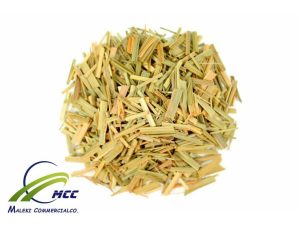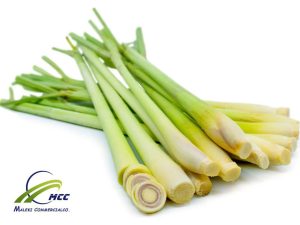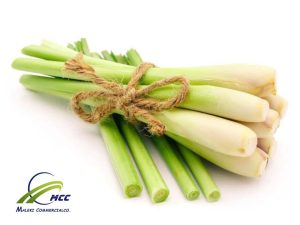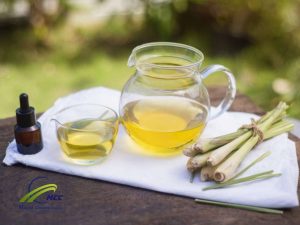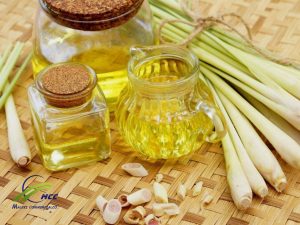Supplier And Bulk Wholesaler Of Dried Lemongrass
Wholesale of Dried Lemongrass with Competitive price In Maleki Commercial.
Shipping is done by land, sea and air to Asia, Europe and all countries with agreed Incoterms.
Lemongrass is an aromatic medicinal plant widely used in the pharmaceutical, food, and cosmetic industries. Due to its multiple applications, substantial quantities of dried lemongrass and lemongrass essential oil are traded globally within the medicinal plant market.
Maleki Commercial is one of the largest Manufacturers of lemongrass in Iran, responsible for a significant portion of the domestic production and supply. In addition to meeting the domestic market demand, this company exports large volumes of the plant and its essential oil to various countries. Distributors, exporters, and pharmaceutical companies are encouraged to contact us for bulk purchases of this plant in standard, premium, and export grades.
The annual production of lemongrass essential oil exceeds 7000 tons, with the primary consumers being the United Kingdom, the United States, Germany, India, and Japan. For bulk purchases and export of dried lemongrass and its essential oil, please reach out to us.
Botanical characteristics
Lemongrass belongs to the Gramineae family, which is the fourth-largest family in terms of the number of species. The Gramineae family comprises about 700 genera and 11000 species worldwide, making it one of the most economically, ecologically, and geographically significant families of flowering plants.
The genus Cymbopogon is one of the most important genera within the Gramineae family and is native to the tropical and subtropical regions of Asia. This name is derived from a Greek word meaning “needle-shaped flower.” This genus comprises approximately 140 species, all of which are native to tropical and subtropical regions of Asia, and 45 are indigenous to India.
Plants of this genus contain essential oils that are utilized in the cosmetic industry, for the production of scented soaps, in pharmaceuticals, as disinfectants, and in tobacco products.
Cymbopogon citratus is a herbaceous, perennial plant from the Gramineae family. It reaches a height of 90 to 240 cm and is characterized by dense, hairy rhizomes and roots. The leaves are bright green, strap-shaped, and elongated, with a linear shape reaching up to 50 cm in length and 1.5 cm in width.
The leaf length varies among species, with the Cymbopogon citratus species having leaves ranging from 20 to 65 cm in length and 1 to 3 cm in width. Some species have shorter leaves.
The flowers are seeded and range from 30 to 40 cm in length. The plant’s roots are spreading, short, and highly branched. The vegetative part of the plant contains essential oils.
Geographic distribution
Global distribution
This plant is cultivated in Iran, Australia, Africa, Latin America, India, Sri Lanka, Indonesia, Pakistan, Congo, Egypt, Nigeria, Argentina, the Philippines, Brazil, Venezuela, North and Central America, and China.
Distribution in Iran:
It is cultivated in the counties of Firuzabad, Iranshahr, and Marvdasht.
Cultivation of Lemongrass
Ecological requirements:
– This plant thrives in tropical and subtropical regions.
– It requires abundant light, ample water, and high temperatures for optimal growth.
– Heavy and compact soils are unsuitable for this plant. Notably, loamy sandy soils are ideal for their growth.
– The plant requires abundant light; therefore, cultivation in shaded conditions should be avoided, as it results in stem hardening and a reduction in essential oil content.
– Regular irrigation is necessary as adequate watering increases the essential oil yield. The plant should be irrigated consistently during the dry seasons, with an annual rainfall requirement of 2000 to 2500 mm.
– The planting field must be thoroughly prepared. In the autumn, deep plowing should be done, and the soil should be mixed with chemical fertilizers using a disc. Early spring is the best time to level the ground by breaking clods and preparing it for planting.
– Weeding is crucial for the growth of the plants. In addition to manual weeding and chemical control, a cultivator should be used between row spaces during plant growth. (A cultivator is a gardening or agricultural tool used for tilling, soil preparation, seed planting, and weed control. It features rotating tines that move through the soil to prepare it for planting or harvesting, and is effective in reducing weeds.). This agronomic practice plays a key role in plant growth and development.
– Different lemongrass species exhibit resistance to various diseases. The use of nutrient solutions enhances plant performance and growth.
Fertilizers and required elements
Before transplanting seedlings to the field, the soil should be fertilized and prepared in autumn. The required fertilizers per hectare are:
– 50 kg potassium oxide
– 62 kg phosphorus oxide
– 125 kg nitrogen
Planting time
For sowing seeds in open nurseries, late March to early April is an appropriate time. (Nursery is referred to as garden beds of various sizes where seeds are initially sown. After the seeds grow and develop into seedlings, they are transferred to the main planting field.)
The suitable time for vegetative propagation is autumn-winter. (Vegetative propagation is characterized as a process, of increasing the number of plant species through vegetative or asexual structures, producing new plants from parts of the main plant, such as stems, leaves, and roots.)
The planting row spacing should be 50 cm, and the distance between plants within the row should be 30 to 50 cm. The appropriate depth for planting in the main field is 15 cm.
Cultivation methods
Seed cultivation
For vegetative propagation via seeds, the seeds are initially sown in suitable nurseries with a substrate consisting of a mixture of fine sand and decomposed animal manure.
With regular irrigation and weeding, the seeds will germinate in early May.
Notably, the high moisture and temperature accelerate seed germination.
The optimal time for transplanting seedlings from the nursery to the main field is from June to July. If seedlings are transplanted in late spring or early summer, harvest will occur 5 to 6 months after transplantation. Alternatively, if seedlings are transplanted in autumn (September), the crop will be ready for harvest the following year.
Vegetative propagation
For vegetative propagation, 3 to 4-year-old plants are first removed from the soil. Each plant is then divided into three to four pieces and planted in the main field. (Note: Used plants for vegetative propagation must be free from any fungal or pathogenic factors).
Harvesting
The number of harvests per year depends on the plant species, the geographic location of cultivation, plant conditions, and climate.
Earlier studies indicate that if Cymbopogon pendulus is harvested four times annually, it yields the highest amount of essential oil.
Effect of Harvest frequency on the yield of lemongrass (C. panicum)
| Harvest Frequency | Yield (fresh plant weight) (t ha-1) | Yield (dry plant weight) (t ha-1) | Essential oil yield (kg ha-1) | Citral Yield (kg ha-1) |
| 2 harvests | 58.5 | 17.92 | 177.2 | 134.22 |
| 3 harvests | 63.5 | 63.33 | 170.1 | 144.75 |
| 4 harvests | 72.4 | 18.23 | 192.1 | 165.31 |
| 5 harvests | 58.9 | 146.83 | 174.6 | 149.80 |
Effect of harvest frequency on lemongrass fertility
| Harvest frequency | Harvest dates | Harvest interval (days) | Essential oil percentage | Citral percentage |
| Two times | July 1, November 1 | 120 | 30% | 77.9% |
| Three times | June 1, September 1, December 1 | 90 | 26% | 85.1% |
| Four times | June1, August1, October1, December 1 | 60 | 27% | 84.3% |
| Five times | June1, July 24, September 1, October 23, December 1 | 45 | 30% | 58.8% |
The average lifespan of lemongrass across various species is 5 years, with an economic yield period of 3 years. The maximum yield is achieved in the second and third years, with a decline in productivity thereafter.
In the first year of cultivation, the harvested yield is 142 kg per hectare. In the third year, the yield ranges from 200 to 300 kg per hectare, while in the fourth year, it reaches approximately 200 kg per hectare.
All parts of the vegetative body of this plant contain essential oil, and oil can also be extracted from dried plant parts.
Essential oil and citral content in fresh, semi-fresh, and dry leaves of lemongrass (C. pendulus)
| Plant Part | Essential oil percentage | Citral percentage |
| Fresh stems and leaves | 24% | 84.31% |
| Green leaves | 35% | 83.36% |
| Dark brown dry leaves and light green semi-dry leaves | 74% | 80.18% |
Lemongrass essential oil
Indian lemongrass essential oil, commonly traded, is derived from Cymbopogon flexuosus, which is native to India. Western Indian lemongrass essential oil is obtained from Cymbopogon citratus, which is widely found in India, Haiti, Guatemala, North and South Africa, and other tropical countries.
Indian lemongrass essential oil is a liquid that ranges in color from yellow-red to reddish-brown, with a scent reminiscent of the aroma of the geranium flower. The essential oil from Cymbopogon citratus is light yellow or yellowish-brown in color and has a lemon-like fragrance.
Chemical composition of lemongrass essential oil
- Citronellal
- Citronellol
- Linalool
- Cineole
- Limonene
- Beta-Mircene
- Geranyl Acetate
- Geranyl Formate
- Caryophyllene
- Elemol
- Methyl Heptenone
- Luteolin
- Apigenin Glycosides
- Proanthocyanidins
- Citral (a compound consisting of two aldehyde isomers: Geranial (alpha-citral) and Neral (beta-citral))
Essential oil content and key compounds in various lemongrass species
| Species Name | Essential Oil Percentage (in dry weight) | Main Compound | Percentage of Main Compound | Vegetative Yield (t ha-1) |
| Martini (Mutia variety)
Nardos (Confer typhlorus variety) |
1.2% – 1.5%
0.8-1% |
Geraniol | 85% – 90%
70-75 |
—-
50 – 60 |
| Flaxosus
Pendulum Kisianus |
1.2 to 1.5
1.5 to 1.7 1.6 to 2.8 |
Citral | 80 to 85
85 to 90 40 to 70 |
50 to 55
55 to 65 55 to 68 |
| Vintrianus | 1.5 to 2 | Citronel | 46.2 | 14.7 to 20 |
Essential oils from C. flexuosus, C. pendulus, and C. citratus are known for their high citral content. (The essential oil from C. pendulus contains 85 to 90% citral, while that from C. citratus contains approximately 80% citral).
Essential oils from C nardus and C martinii are recognized for their high geraniol content. (C. martinii contains 90% geraniol, and C. nardus contains 75% geraniol).
Essential oils from C. winterianus, including the Java and red varieties, contain 32 to 45% citronellal, 12 to 18% geraniol, 11 to 15% citronellol, and 3 to 8% geranyl acetate.
- winterianus and C. nardus essential oils have 38.4% citronellol and 14.9% geranyl acetate-citronellol.
Uses of Lemongrass essential oil
Citral, found in lemongrass essential oil, is utilized in pharmaceuticals, canning, perfume manufacturing, and the cosmetic and personal care industries. Citral is also used in the production of various vitamins and insect repellents.
Geraniol, due to its pleasant rose-like aroma, is used in the perfume industry, for making scented soaps, in cosmetic and personal care products, in cologne manufacturing, and in the production of disinfectants. The essential oil of this plant, rich in citronellal, is a potent insect repellent. Additional uses of this plant include:
– Anti-inflammatory
– Analgesic
– Anti-stress
– Anthelmintic
– Antibacterial
– Antifungal
– Treatment for dandruff
– Relief from neuralgia
– Relief from rheumatic pain
Medicinal and therapeutic properties of lemongrass
– Anticancer
– Sedative
– Treatment for gastrointestinal disorders
– Treatment for menstrual pain
– Treatment for kidney stones
– Treatment for bronchitis
– Anxiety relief
– Headache relief
– Depression treatment
– Treatment for dental decay
– Cholesterol reduction
– Blood sugar reduction
– Hair growth stimulation
Manufacturer, Supplier, and wholesaler of dried lemongrass
Maleki Commercial Group is a prominent Manufacturer of aromatic lemongrass in Iran, responsible for a significant portion of the country’s supply. This holding oversees the entire process of cultivation, harvesting, drying, and processing of this plant under the guidance of experts in medicinal herbs. For bulk purchases of this aromatic herb, please contact us via WhatsApp or email.
Wholesale and Supplier (Bulk) of dried lemongrass
If you require sorted, high-quality dried lemongrass for distribution, processing, or export, ensure a reliable and straightforward purchase with our quality guarantee.
Wholesale (bulk) of Dried Lemongrass
Lemongrass is highly sought-after export herb due to its extensive applications in the pharmaceutical, cosmetic, fragrance, and food industries. It is one of the most demanded herbs among traders of medicinal plants. For bulk purchases, please reach out to us.
Export of dried lemongrass leaves
If you need high-quality, export-grade dried lemongrass with guaranteed delivery to your destination country, experience a seamless and reliable purchase with us. Our decade-long experience in exporting dried lemongrass to countries such as the USA, Russia, Vietnam, and Italy reflects the quality of our products. Trust us with your first purchase and experience our quality and reliability.
Manufacturer, Supplier, and wholesaler of lemongrass essential oil
Maleki Commercial Group produces pure and organic lemongrass essential oil with the highest citral content and the richest combination of phenolic and terpenic compounds. For the organic essential oil of this plant, please contact us.
Wholesale (Bulk) of pure lemongrass essential oil
Our essential oil is produced and packaged using state-of-the-art equipment under the supervision of chemistry experts. For purchases of pure and organic lemongrass essential oil, please get in touch with us.
Export of lemongrass essential oil
With a decade of experience in exporting pure and organic lemongrass essential oil to countries such as Vietnam, South Korea, Thailand, the Philippines, and Germany, Maleki Commercial Group produces the highest quality lemongrass essential oil. We are ready to export lemongrass essential oil to any location worldwide with premium quality and standard packaging, adhering to agreed Incoterms such as EXW, CIF, CFR, FCA, and more.

